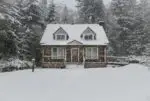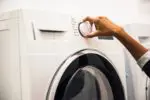
How To Save Energy in Winter
Here comes the season of hot baths, blankets, warm socks and higher energy bills. Yes, the colder the winter, the more you spend on your utilities. As temperatures outside get really inhospitable, we will always find ways to make our homes comfortable spaces.
In the United States, energy costs for heating and cooling together make up about 42 percent of residential energy consumption, according to the Energy Information Administration (EIA).
While in Canada, the land of a considerably colder winter, space heating is by far the largest energy expense in a home, around 63 percent, as reported in the 2009 Energy Efficiency Trends in Canada study by Natural Resources Canada.
To give you a sense of how these expenditures can impact your winter energy bills, the EIA published a report based on 2017’s winter in the U.S. According to the study, natural gas bills would increase up to 16 percent when facing weather 10 percent colder than the forecast.
As to electricity, the average bill would be 9 percent higher on colder days.
So, how do we save energy during winter?

A recent Environics Research study shows that plenty of others are wondering the same thing. According to the poll, 78 percent of Canadians were looking for ways of applying energy saving tips in their homes.
Actually, 82 percent of Canadian households used at least one practice to conserve energy in 2011, as reported by Statistics Canada.
Yet, you can do more to have energy for less during winter.
Natural Resources Canada suggests you think of your home as a system, which means every change in one area can affect the others — and the more you do in order to keep it efficient, the more energy you will save.
There are many ways to start saving money on your winter energy bills. According to the Household and the Environment Survey by Statistics Canada, some of the most common energy-saving practices in 2011 were:
- Using programmable thermostats
- Using compact fluorescent light bulbs (CFLs)
- Washing laundry in cold water
- Turning off computer monitors when they are not in use
- Turning off gas fireplace pilot lights in summer
- Air drying dishes in the dishwasher
While some changes can be daunting, others can be very simple and effective. From minor home improvements to new equipment, you can save electricity and natural gas and have a more affordable winter. Read on to learn 15 tips to cut energy costs this winter.
1. Draught-proof your house
A reasonable amount of heat is lost through holes, cracks and gaps. Thus, you should start your energy-saving mission by feeling your walls, windows, doors and corners. If you notice a cold air current coming in from any of those gaps, it means you are losing heat (and money).
The coldest days are perfect for inspecting your home windows visually. If there is a sign of frost or ice on the window frame, it is one of the indicators that air leaks might be reducing surface temperature. Running a simple “Hand” or “Candle Test” will help you to identify the obvious sources of your air leaks around the frame. If your windows have defects, eventually you’ll need to prioritize window replacement to improve the overall efficiency of your home. Constant water accumulation around the frame and on the window wall can cause unexpected mold formation that is hard to get rid of unnoticed. As a temporary budget solution there a few cheaper options to reduce heat loss.
The United States Environmental Protection Agency (EPA) estimates that people can save an average of 15 percent on heating and cooling costs by finding specific air-sealing solutions, such as insulating attics and floors over crawl spaces.
Solving insulation gaps isn’t always cheap, like buying Energy Star-certified windows and doors or installing whole new insulation systems. Still, you can find less-costly options and solve the problem for this winter, such as window treatments.
One of the cheapest choices is to buy a window insulator kit, which comes with films and double-sided tapes for you to seal air leaks.
If you don’t want to spend a single dollar, you can even think of creating a DIY draft stopper for your doors and windows. They can easily be made with foam or thick fabric.

2. Consider a programmable thermostat
A programmable thermostat lets you set temperatures for each time of the day, so you can find the perfect balance between comfort and saving energy. For example, if you’re not at home for the whole day, why not set it at a lower temperature?
As stated in this EnergyRates.ca post, programmable thermostats may raise doubts, since people can sometimes overheat or overcool their homes. If you make smart choices, however, your programmable thermostat can save you a lot of money.
According to an article by Small Business Trends, savings can jump to an average of 5 percent just by setting the temperature one degree lower in the winter. This indicates that the thermostat will actually save you money in the long term.
Similar results were discovered in a research conducted at the Canadian Centre for Housing Technology in 2003. While examining a mid-efficiency gas furnace during winter, researchers found out that setting the temperature at night at 18 degrees Celsius (about 64 degrees Fahrenheit) results in a 6.5 percent savings in natural gas and 0.8 percent reduced electricity use.

3. Block the chimney when unused
Winter isn’t only about higher energy bills. It’s also the holidays season — which means it’s time to light up the fireplace and enjoy the snowy weather with your loved ones.
‘Tis the season, but don’t forget to conserve the heat inside your house after the festivities.
Chimneys are one of the big sources of heat loss in winter, so once you’re done with the fireplace mood, make sure to block the chimney.
There are multiple ways to stop the hot air from escaping up your fireplace. Some of the most common are:
- Top sealing dampers
- Chimney caps
- Chimney balloons
The good news is that you can find sealing solutions to your chimney at various prices — and probably one of them is going to fit your wallet.

4. Keep your furnace filter clean
Furnaces were the most common type of heating system used by Canadians in 2011, corresponding to 57 percent of households, according to a Statistics Canada study.
In the United States, the majority of homeowners also rely on natural gas furnaces, especially in states of colder climate, as reported by the U.S. Energy Information Administration in 2015.
Although this is the most-employed heating system in North America, what consumers often don’t know is that it is highly important to keep their furnace filters clean.
The air flow determines the furnace’s performance. As stated in a 2012 NADCA report, a better air flow leads to greater performance. As the study suggests, dirty filters, clogged coils and fouled blowers can impede air passageway and tend to increase your energy bills.
Some experts even suggest you check the filter in your furnace once a month — and yes, replace it if it’s dirty, as stated by Roam New Roads in their “10 tips to help conserve energy at home this winter” article.

5. Do solar panels work well in the winter?
Well, it depends. But they can work better than you might think.
In 2015, researchers from the Northern Alberta Institute of Technology (NAIT), discovered that the snow doesn’t impact solar panels as dramatically as people would expect.
Of course, results can be different according to where you live and how many sunny days your city basks in per year. For example, the NAIT research was conducted in Grand Prairie and in Edmonton — considered one of the sunniest cities in Canada, alongside Calgary and Winnipeg.
Actually, in some cases, solar panels can even boost production during winter. As reported by CleanTechnica, snow can help solar panels due to the reflection off of the white, snowy surfaces.
Sure, there is also the price: Although they are an energy-saving solution, solar panels are still quite expensive, so they will be a good fit only if you plan to save money in the long term. If you are looking for cheap, short-term tips, read on to know more.

6. Choose energy-efficient appliances
In 2013, Canadians saved $12 billion in energy costs thanks to energy efficiency, as stated by Natural Resources Canada.
If the billions count sounds like too many zeros and doesn’t tell you much, just know that buying an Energy Star-certified refrigerator can save you individually more than $270 (U.S.) over the next five years.
Your appliances account for up to 13 percent of your energy use at home. The more efficient they are, the more money you will save.

7. Save money on your Christmas lights
As the end of the year approaches, holiday decorations start to show up here and there — and you probably will do your part and adorn your house with colourful, tiny lights.
Though festive and shiny, holidays lighting can waste a quite amount of energy. But don’t worry, you don’t need to cancel your Christmas decoration plans or something like that.
By choosing LED light strings, you can save a lot more money in comparison to incandescent bulbs.
According to the Department of Energy of the United States, lighting up a six-foot tree 12 hours a day for 40 days would cost an estimate of $10 when using incandescent C-9 lights. In contrast, the same tree would cost only $0.27 in the same time period with LED strings.
As if this wasn’t enough, LED lights are known for being safer, cooler and even easier to install.

8. Open your curtains and let the sun in
Unlike the summer, winter sunlight is good for your energy-saving plan. The tip is as simple as it sounds: The sun provides free heat when combined with your main heating methods.
To take the best of this energy-saving practice, the U.S. Department of Energy suggests you open curtains on your south-facing windows during the day, and close them at night to reduce the chill from cold windows.
This is a simple but convenient resource to have more comfort at home without having to think about energy rates.

9. Is a fireplace a good option?
A fireplace can increase your daily consumption of energy, but there are some things you can do to maximize your savings.
If you like to spend winter nights by the fireplace, you can start to save energy by finding the best location to put it. According to the U.S. Department of Energy, most fireplaces are essentially space heaters, so they should be where you spend most of your time.
Also, you can find ways to make the heat circulate to the rest of the house, such as a fan or a blower assembly.
In their article on energy-efficient fireplaces, Buywise Consulting states that such appliances can save up to 50 percent on energy consumption.
However, as reported by Natural Resources Canada, you should try to install your thermostat away from your fireplace.
During an experiment with thermostats close to fireplaces, researchers came to the conclusion that this situation can cause the setpoint temperature of the thermostat to be satisfied and furnace activity to be reduced.
The problem is that fireplaces are usually less efficient than furnaces, and most of them are space heaters, so they will leave your other rooms colder than the other ones while spending more energy.
10. More clothes at home: Dress for winter
Of course, you won’t abolish your heating system and live like the people from the Ice Age. However, recent studies have been highlighting the perks of wearing more layers at home.
As described by the folks at TreeHugger, your clothing choices can be part of your savings strategy.
If you insulate your body with proper clothing, you won’t have to rely only on your heating system, which means you will be able to set your thermostat at a lower temperature and save money.
Kris de Decker from Low-Tech Magazine detailed how much you could be saving by lowering your home temperature — and it’s a lot.
According to him, the reduction in energy use for space heating was less than 20 percent from 1993 to 2005 thanks to energy efficiency. Whereas turning down the thermostat from 22 degrees Celsius to 18 degrees would result in energy savings of at least 35 percent.
And you don’t even need to look like you’re going to ski. Thermal shirts, socks, sweaters and rugs will do the work and keep your body warmer. You can even find insulated curtains and put warm blankets on your sofa, according to the folks at The Spruce.

11. Don’t leave appliances on standby
A calculation made by EnergyRates.ca shows how much money you spend by leaving your appliances on standby mode. Here are some of the results:
- LCD TV — $2.11 per year
- Honeywell portable fan — $24.84 per year
- Phone charger — $1.55 per year
- Microsoft Xbox — $10.83 per year
- Sony PlayStation 4 — $5.80 per year
These seem to be small amounts of money, but when you think of all of the appliances at your home together, they can add up to surprisingly high yearly costs.
According to the United Kingdom’s Energy Saving Trust, you could save an estimate of 30 British pounds (around 50 Canadian dollars) a year by avoiding standby mode. It might not seem a lot, but you could be saving around $500 in 10 years.

12. Wash your clothes at a lower temperature
Water heating consumes 90 percent of the energy used to operate a washing machine, according to Energy Star. This means you could be saving a lot of money each time you do laundry.
Unless you have serious stains or oily residues on your clothes, warm water isn’t going to make such a big difference to your clothes, as reported by Energy Star.
Actually, cold water can be as useful as hot in most cases, especially if you buy proper detergents, as stated in Gizmodo’s article “Why are you still washing your clothes in warm water?”.
Nowadays, most detergents are designed to work effectively at 30 degrees Celsius, so washing your clothes at a super-high temperature isn’t that necessary, according to this Caba blog post.

13. Take the best out of rebates
Energy rebate programs provide cash rebates as an incentive for people to buy more energy-efficient appliances.
Whether you decided to buy a certified Energy Star window or a smart thermostat, there are many rebate programs out there for you to get your money back.
In Ontario, the nonprofit Green Ontario Fund announced several rebates options for the province in 2017, such as:
- Up to $5,000 to replace specific windows
- Up to $7,200 off new insulation
- $100 rebate for air sealing
In Alberta, Energy Efficiency Alberta has an online rebates platform where users can get $75 back after buying certified Energy Star appliances, like efficient furnaces, refrigerators, clothes washers and smart thermostats.
Canadians can go to Natural Resources Canada’s search directory to know more about federal, provincial and even municipal rebates programs across the country.

14. Switch the direction of the ceiling fan
Do ceiling fans save energy during winter? Yes, they do. You just need to set it the right way.
Ceiling fans are known for cooling the house in summer, but they can also keep you warm in winter. You just need to change the direction of the air flow to clockwise and run the fan on the lowest mode, according to this Unique Indoor Comfort article.
Harvard University researchers discovered in 2015 that ceiling fans running in the forward direction can make a room warmer by using thermal destratification, forcing the warm air to go down.
The warmer the room, the lower you need to set your thermostat. Essentially, you will be saving money without losing comfort.

15. Know where your money goes
When you get to know your energy use better, you can start planning where to save on your energy bills.
According to Natural Resources Canada, 38 percent of the energy used by Canadians in 2007 was electricity, while natural gas corresponded to 45 percent.
In a more detailed sense, 63 percent of the energy used in Canadian households goes to water heating, 19 percent to appliances and 12 percent to lighting, as reported by NRCan.
Of course, this data can change dramatically from one home to another, but it gives you some tips on where to start reviewing your energy use and then your expenditures.
Once you know what are the main sources of energy use in your home, you can rethink your habits and find new energy-efficient solutions. Your wallet (and the environment) will thank you.











